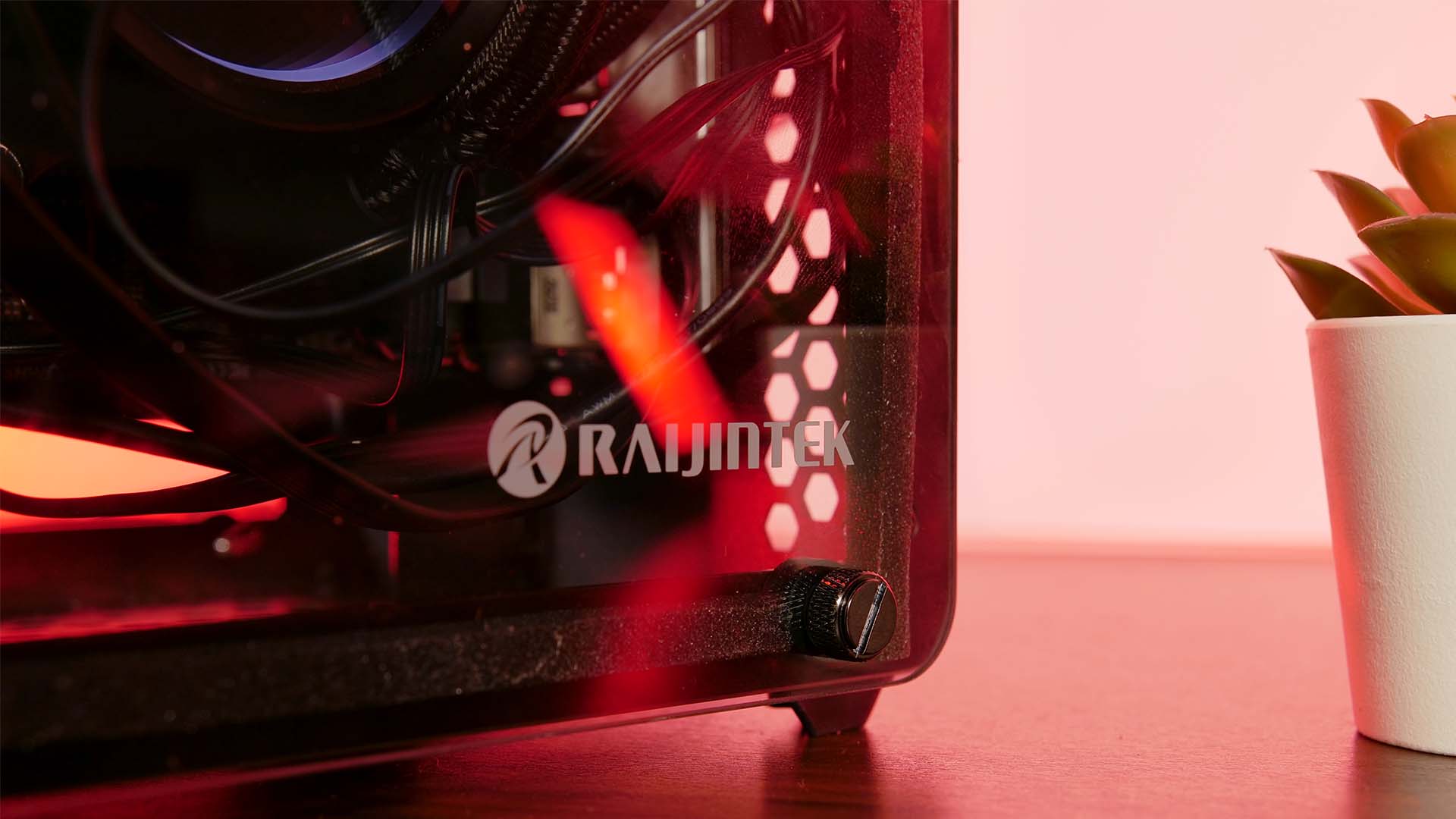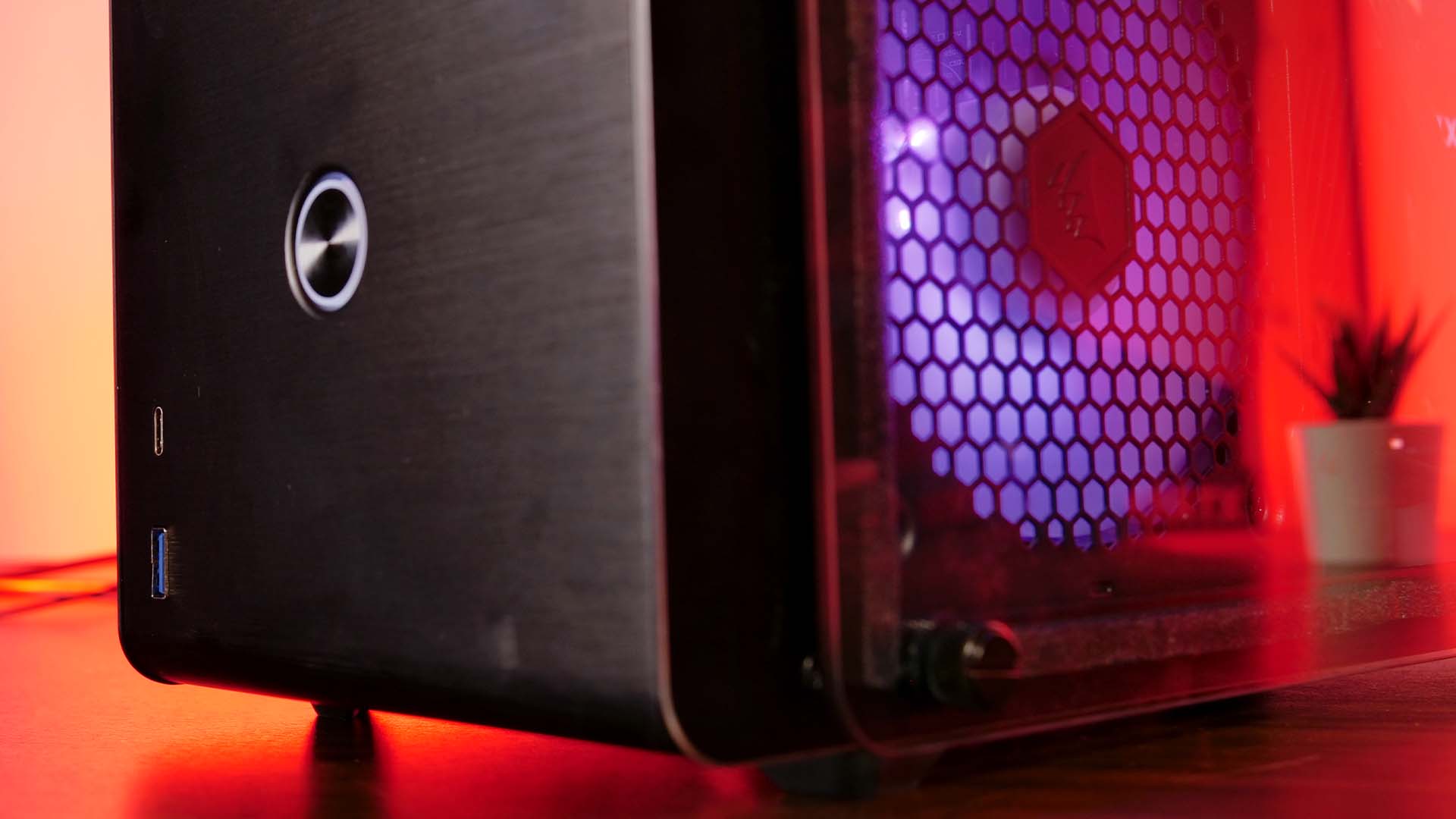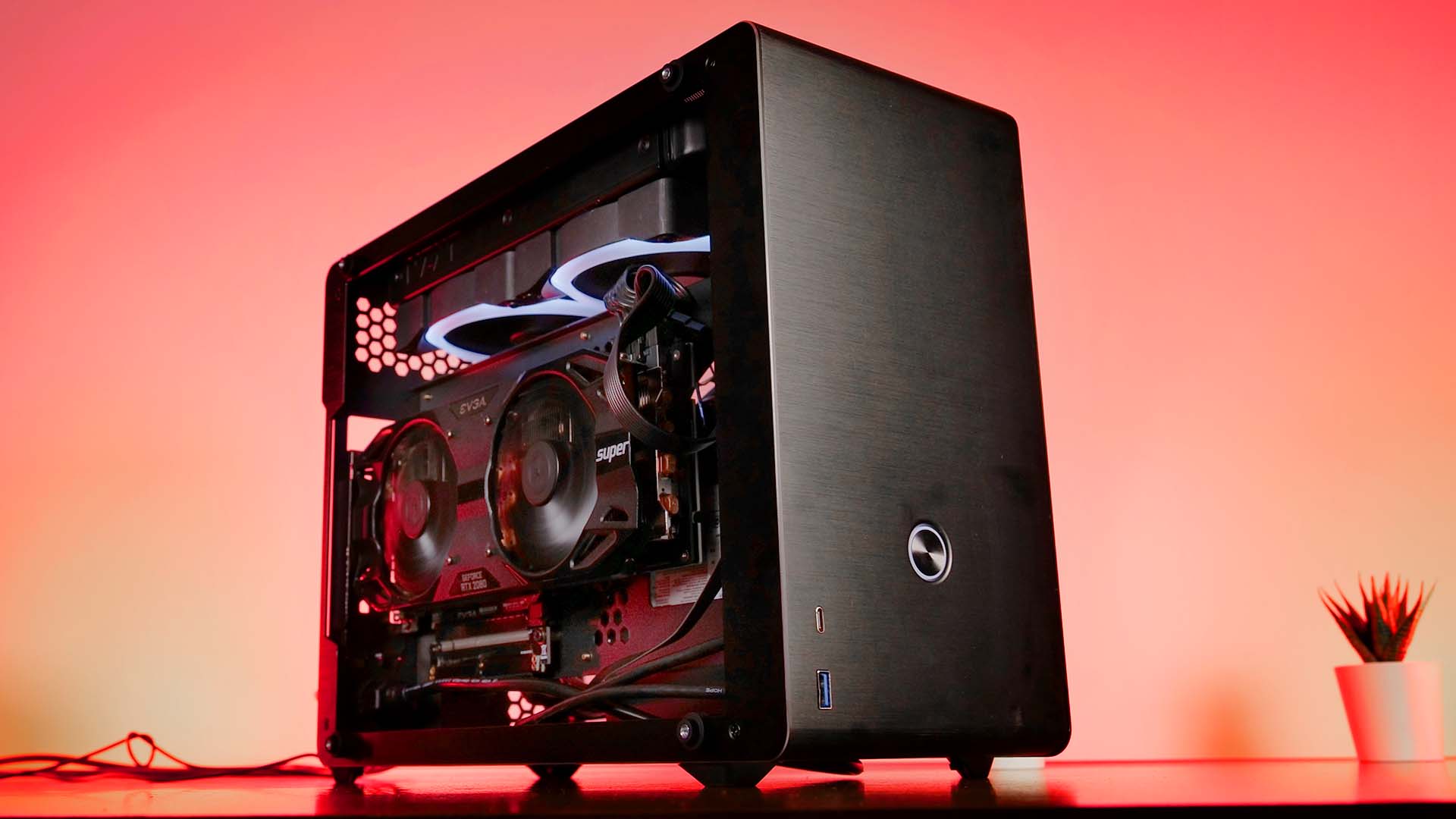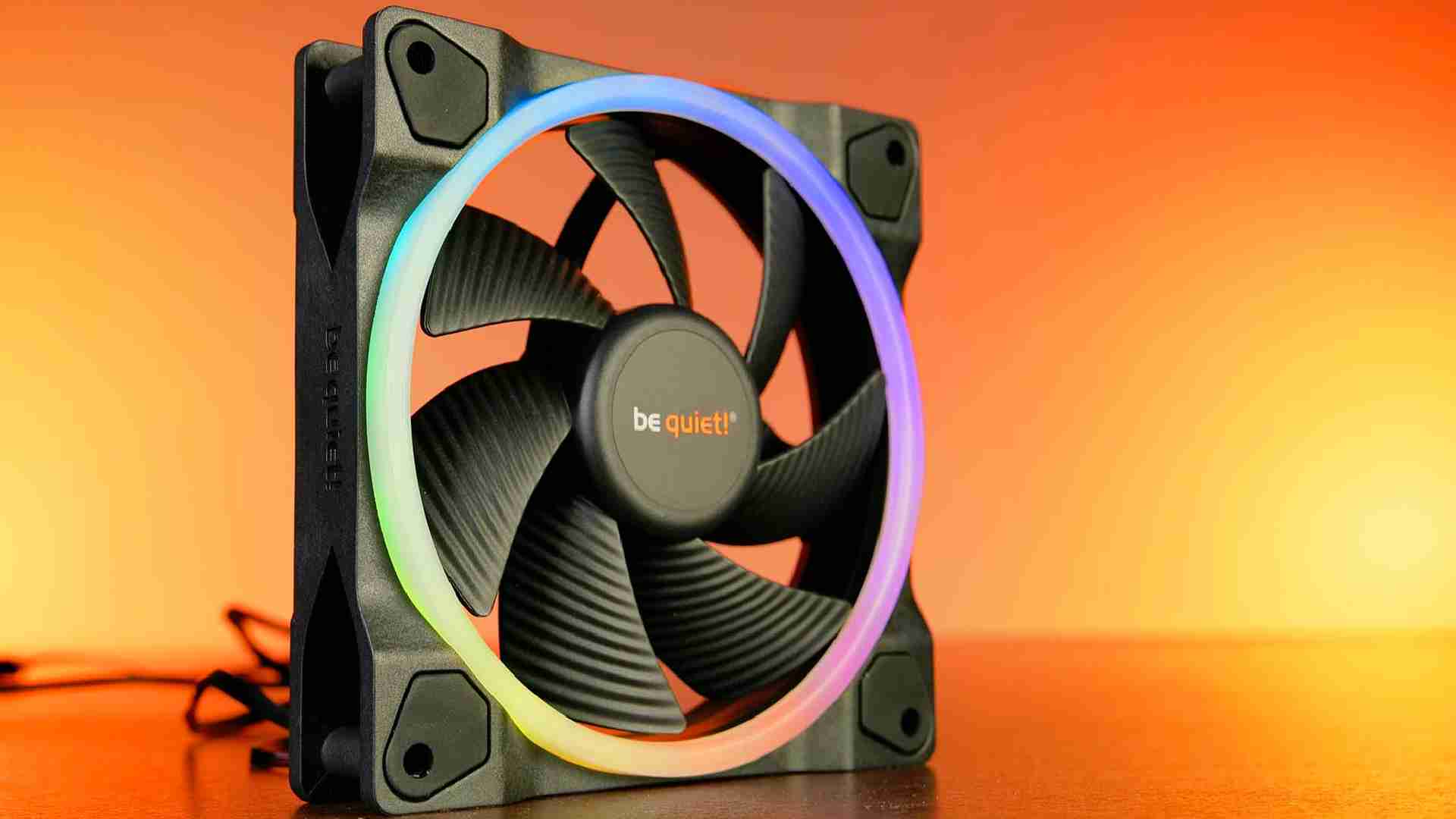Raijintek Ophion Evo Review
Introduction
If there is one thing that does not combine very well, it is a Small Factor Case and an RTX 3090. However, this does not seem to apply to Raijintek. Meet the Raijintek Ophion Evo. A 19l SFF Case, capable of fitting any GPU you want!
Positive
- Dual Tempered Glass
- ATX PSU
- 19l
- 330mm long GPUs
- 240mm AIO support
Neutral
- Watercooling basically a requirement
Negative
- Hard to Cable manage
What's in the Box?

Raijintek's Ophion Evo comes in the usual Brownish carton box containing the case wrapped in some foil and a couple of styrofoam blocks.
Once everything is unwrapped, we will find the case wrapped in some protective foils due to the dual tempered glass side panels and a bag of goodies inside.
Ignoring the usual Mainboard, PSU, and SSD screws, Raijintek also included a handful of foam-like strings. These strings with self-adhesive tape on one side are meant to be the optional dust filter for the side panels. In order to use them, we can simply remove the protective layer of the tape, and glue them onto the case in-between the screws of the side panels.
Specs
In comparison to many other SFF cases, the Ophion Evo spec sheet does not include any complicated "ifs". Therefore we were able to add a general spec sheet below:
| Name | Raijintek Ophion Evo |
| Color | Black / White |
| Type | Small Form Factor |
| Mainboard Size | ITX |
| PSU Size | ATX |
| PSU Position | Next to the Motherboard |
| Side Panel | Tempered Glass |
| Side Panel 2 | Tempered Glass |
| Front Panel | Brushed Aluminum |
| CPU Cooler Height | Up to 90mm |
| GPU Length | Up to 330mm |
| 2.5" Drives | 4x |
| 3.5" Drives | 1x (uses 2x 2.5" spots) |
| IO | 1x USB 3.0 Type C, 1x USB 3.0 Type A |
| Dimensions | 174x375x290mm (WxDxH) |
| Fan Spots |
1x 120mm Spot in the Bottom (uses 1x 3.5" Spot / 2x 2.5" Spots) 2x 120mm Spots in the Top |
| Watercooling | Up to 240mm Support in the Top |
| Extras | Additional optional Dust filter for the Side Panels |
Compatibility

Usually, for Small Form Factor Cases, the Compatibility part of the review is also the longest.
For the Ophion Evo however, it is more like a recommendation.
Mainboard

As it still is a 19l Small form factor case, the Ophion Evo requires you to use an ITX Motherboard.
PSU

Unlike most SFF cases, the Ophion Evo allows you to use standard ATX Power supplies.
But this does not mean you should exaggerate.
Although it is not specifically mentioned, we absolutely recommend using a standard 140mm long (or shorter) PSU.
Not only will this prevent your cables from hitting the fan which will be sitting above the PSU, but it also provides you with the biggest amount of cable-management space as the only place you will have, is the tiny amount between the PSU and the Fan above.
GPU

If there is one fun part of this review, it's the GPU.
By supporting up to 330mm long 2-Slot GPUs, there is almost nothing that the Ophion Evo cannot handle.
Only one of the very few exceptions being the Founder Edition RTX 3090. But almost any other card will fit in there.
Fans

Inside the Ophion Evo, we have 3 Fan spots.
1x 120mm In the Bottom and 2x 120mm Spots in the Top.
Both of these Spots are covered by a magnetic dust filter.
Cable Management

As mentioned in the PSU's compatibility section, cable management inside the Ophion Evo is a really hard task.
Being a Dual Tempered Glass Side Panel Case, there is absolutely no spot to stuff the leftover cables in there, making it very likely to see your cables.
The only available place which is not taken by some sort of hardware is between the PSU and the Fan spots above. Though don't forget that this space is not the be stuffed infinitely, as at some point, the cables might start pushing against the fan.
IO

In terms of IO, Raijintek decided to include 1x USB 3.0 Type-A and 1x USB 3.0 Type-C. Although these might not be the newest standards, we believe it to be enough for the everyday use of the average user.
Cooling

Officially, the Rajintek Ophion Evo supports up to 90mm high CPU coolers. That being said, after building multiple systems inside this case, we can absolutely reassure you that this case is meant for water cooling.
Even though there are many low-profile coolers available that could do the job pretty well, the available 240mm of potential AIO space is just better spend on an AIO instead of case fans.
Design

The front of the Ophion Evo is covered with a brushed Aluminum Panel. The same material is being used around the Tempered Glass Side Panels.
By using real aluminum in combination with all of that glass, Raijintek was able to create a stunning-looking case. No Plastic to be found, only real metal.
As nice as the Aluminum and its round edges might look, there is a small part of the case that bugged us.
The top portion of the Ophion Evo, where the Fans should be mounted, is made out of the usual steel. Unfortunately, this part of the case is not being completely covered by the Top Fan Filter. Due to the panel's differences in color and finishes, the transition between the two is quite obvious and not very appealing.
But ignoring this minor issue which is only visible from a specific angle, the overall look and feel of the case suggest a high quality and sturdy piece of hardware while not being overly presumptuous by using any sort of plastic with a paint job and overused RGB.
Installation

The Installation process inside the Ophion Evo is a complicated topic.
Even though the actual assembly is an easy and straightforward process, the Cable management that follows tends to be a nightmare.
During the installation process, there are no noteworthy steps except for the included PCIe Riser and Motherboard. Out of the box, the PCIe riser is pre-attached to the GPU bracket and just lying inside of the case. Due to the Motherboard being installed on the right side of the case, we need to flip the Motherboard around, making the PCIe slot appear at the top.

Unlike usual, we now also need to route the PCIe Riser to the Top of the case. Naturally, we tend to first mount the Motherboard and then connect the riser. Inside the Ophion Evo however, we need to position the Riser behind the motherboard before screwing it down.
Doing this allows the PCIe riser to exit the space behind the motherboard exactly where the PCIe slot is. Theoretically, we could also position the Riser in front of the Motherboard, but this would result in completely blocking the CPU. Even if this might not be the biggest issue while using Watercooling, it just doesn't look very appealing.

After having the complete build together, the usual last step is Cable Management. Due to the Ophion Evo being a Dual Tempered Glass Side Panel case with both sides being used for components, there is absolutely no space to be found to hide any cables.
If you've used a standard 140mm long PSU, you have a bit of space to stuff the wires in above it, but it can still be seen.
So even if you do everything you can, CM will never be an easy task inside the Ophion Evo, and the only "tip" we can provide, is to use the shortest wires you can find.
Conclusion

Overall, Raijintek's Ophion Evo is a very interesting case.
The brushed aluminum front and sides give it a premium high-quality appearance while the dual tempered glass side panels are able to show off some hardware.
Even though it is not specifically mentioned to use a 240mm AIO, we do absolutely recommend it. Not only will it be a lot better than alternative sub 90mm high air coolers, but it will also make sure of the space at the top of the case.
Having built multiple systems inside the Ophion Evo however, we also want to mention that the best fit would be an AIO similar to an Arctic Liquid Freezer. Due to its single cable (or dual cable for ARGB Version) design, you will not have to hide away all the cables which tend to be included with most AIOs, especially the ones including some proprietary software.

Additionally, we wanted to mention the lost opportunity in form of 140mm Fan support. During our review, we discovered that the bottom Fan slot is also capable of fitting a 140mm Fan. Although we were unable to physically mount the fan in that spot, we were able to only position it and immediately notice a temperature decrease within our GPU. We believe that this is mainly due to the 140mm Fan's size which is now protruding over the GPU, making it able to blast the air directly in front of the GPU Fans, or directly into the heatsink. We would really appreciate it if Raijintek updated the Case with 4x additional Fan holes.

But other than that, there is not much negative to say about the case.
With its impressive 330mm long GPU support, it is one of the few SFF-categorized cases that is able to fit a full-length RTX 3090.
Therefore, we can only recommend this case for anybody who is looking to build a Powerful PC while using the least amount of space.


Gelid Glacier RGB Review
What happens if we take two of Gelids Stella Fans, and slap them onto a dual tower heatsink? Exactly, one hell of a thick coo
Read More
Inter-Tech IT-3503 Airstream Review
Inter-Techs IT-3503 Airstream has one giant argument! Actually, there are two. By pumping air into the case using two giant 2
Read More
be quiet! Light Wing 120 Review
be quiet!s Light Wing 120 set of fans promises the usual be quiet! level of performance paired with some outstanding RGB ligh
Read More
AMD Ryzen 7900x Review
Just like the 7600x, the 7900x brings the Ryzen CPU-Lineup to a whole new level. With comparable single-core performance, the
Read More